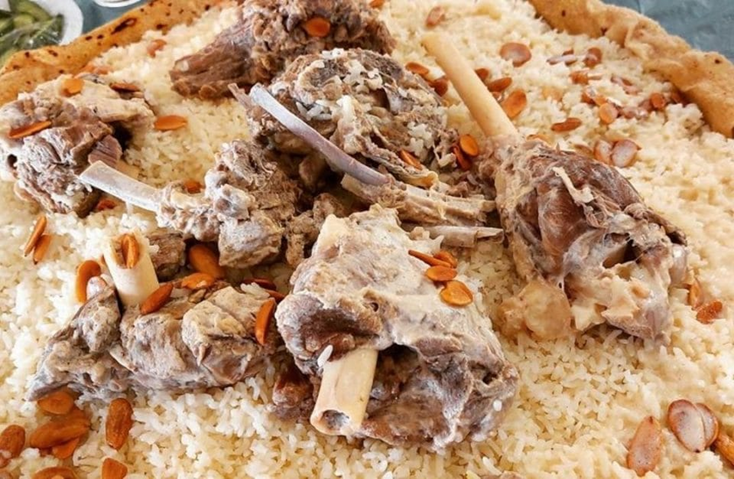Jordan food and the spirit of Med Pearls Slow Tourism

Food plays a major role in the Jordanian culture, as well as its social scene. From street food to fine-dining, Jordanian food is inherently traditional, using authentic cooking methods and recipes passed down from generation to generation, and incorporates local and regional ingredients and a multitude of fresh herbs and spices. Tasting Jordanian food is one of the best ways to experience the country and travel slow. This is why this article takes advantage of the knowledge of our Med Pearls Jordan partners to provide the insights on must-know foods for those travelers who want to travel slow.
Mansaf
The national dish of Jordan, which is traditional and authentically Jordanian. This dish which is often served on a large platter and is intended to be shared consists of cooked lamb which is prepared in a fermented yogurt sauce. The meat is then served over rice and sometimes bulgar spiced with local herbs. There are many recipes and small nuances in the ingredients and ratios used, but one thing is certain, a visit to Jordan means eating Mansaf is a must.
Maqluba
Is another traditional dish served and consumed nation-wide. Maqluba, which literally translates to upside-down, is a dish that is very popular, and comes in a wide range of styles. The pot is prepared with rice, and a variety of vegetables (potatoes, carrots, egg-plant and cauliflower) and meats (lamb or chicken) which are cooked together in a pot. Once ready, the pot is then flipped upside down, thus the name and sprinkled with roasted almonds or pine-seed prior to serving. Maqluba is hearty, filling and delicious, not to mention how appetizing it looks.
Zarb
Is a traditionally Bedouin dish, and refers to a meal that is prepared underground for hours. This technique is unique whereby meat (usually lamb) and vegetables like tomatoes, carrots and onions are wrapped together, and placed in a hole in the ground which is dedicated for cooking. The hole is then filled with hot coals and covered with sand, and blankets are laid over the top to further trap the heat. Hours later, the entire mix of meat and vegetables is taken from the earth and served together. The meat is juicy, tender and flavorful, infused with the essence of the vegetables and the smoke. This technique is utilized in the desert, is deeply connected to the Bedouin way of life, and is by far a great way to enjoy a meal in the desert of Wadi Rum.
Galayet Bandora
Often hot and spicy, this delicious dish is inherently Jordanian, and widely popular, despite its modest ingredients: tomatoes, hot peppers, onions seasoned with salt and olive oil. In fact, Galayet Bandora is a popular dish present in Levantine cooking especially since the ingredients are both regional, easy to access and affordable. This dish is also easily eaten with many other dishes and pairs easily with other main dishes as well as the mezze. Galayet Bandora is best enjoyed with fresh bread or pita and topped with toasted pine nuts and fresh herbs.
Makmoura
This is an old Jordanian-oriented dish, eaten mostly by people in North Jordan. Some Jordanians might not even recognize it, nonetheless, it is a traditional Jordanian dish deeply rooted to the country life. Makmoura, meaning buried, and is exactly what it sounds like. Boiled chicken and onions are buried under a thick blanket of dough and cooked in the oven until well-done. It is later served in triangle pieces, exactly like cake.
No meal is complete without something sweet to wash it all down. And here are but a few of the local Jordanian deserts, which are served following the meals:
- Baklava: A popular dessert, Baklava is a filo-pastry filled with nuts, and drenched in a honey-based syrup.
- Kanafa: This is also a special kind of pastry filled with nuts or goats’ cheese.
- Ataif: This dish is traditionally eaten during Ramadan and consists of small fried pancake-like pastries filled with nuts or cheese, and soaked in a sugar-based sauce.
- Mohallabiya: This is a milk-based pudding perfumed with rose water or orange blossom water, and decorated with whatever crushed nuts are available.
If you try any of them let us know! Below our social media so you can tell us!
-------------------------------------------------------------------------
Check regularly: www.enicbcmed.eu/projects/med-pearls
And our social media:
@MedPearlsProj - Med Pearls Project (Facebook) - medpearlsproject (Instagram)







